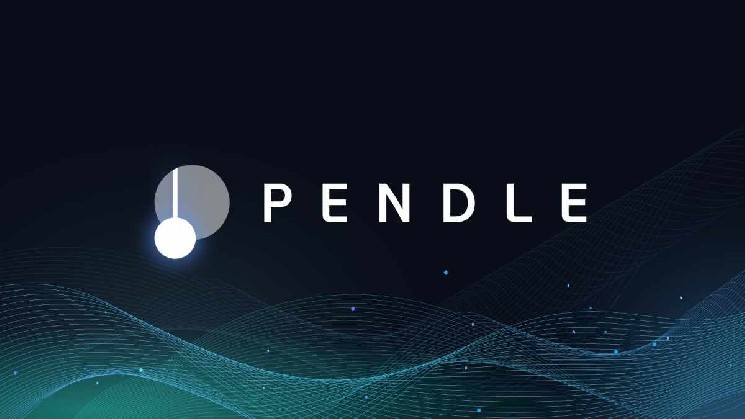TL;DR
- Pendle Finance closes Q3 with strong momentum as its average TVL reaches $8.75 billion, driven primarily by stablecoin inflows and expanding yield-trading activity.
- The platform sees a steady increase in active users and trading volume, reinforcing its role in the tokenized-yield segment.
-
Growing institutional participation and deeper liquidity strengthen Pendle’s position as one of the most relevant DeFi venues for rate and maturity strategies.
Pendle Finance reports notable progress in Q3 2025, supported by rising liquidity, broader adoption of tokenized yields, and consistent demand for stable income strategies. The platform consolidates its presence in decentralized finance as traders seek efficient tools for managing rates and maturities.
TVL Expansion Strengthens Pendle Finance’s Position
The rise in TVL to an average of $8.75 billion reflects a stronger preference for stablecoin-based strategies, which account for nearly eighty percent of locked liquidity. Activity in Pendle’s pools increases across short-dated maturities, fixed-rate segments, and tokenized yield markets.
Quarterly trading volume surpasses $23 billion, while fee revenue reaches about $9.5 million. This shift is partly linked to higher participation from institutional desks using Pendle for carry trades, rate hedging, and basis opportunities. Independent market trackers point out that tokenized yield markets continue to expand, and Pendle captures a significant share of that flow.
A growing number of analytics dashboards now integrate Pendle data into their risk models, improving transparency for traders who rely on rate curves, implied yields, and maturity distribution metrics. Liquidity providers also report more efficient capital rotation, supported by new tools that help evaluate the yield outlook across multiple networks.
Market Adoption And Yield Trading Growth
Pendle’s adoption grows across networks like Ethereum and Blast, where liquidity deepens on a steady path. Its modular architecture supports integrations with automated vaults and yield managers that prioritize stable return profiles. Several on-chain derivatives protocols now incorporate Pendle-based instruments to refine pricing models, increasing demand for YT and PT across secondary markets.
The dominance of stablecoins as core collateral signals interest in products that reduce volatility while maintaining competitive returns. Recent analytics reports show rising demand for platforms that allow users to separate principal and yield components, an area where Pendle keeps a clear operational edge. Developers working on new structured products also reference Pendle’s rate primitives as a key building block for upcoming DeFi integrations.
Looking ahead, if current inflows persist and integrations continue expanding, Pendle may maintain its growth trajectory and further consolidate the yield-trading segment as a central component of the DeFi landscape.

